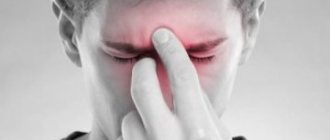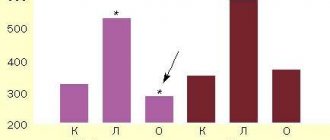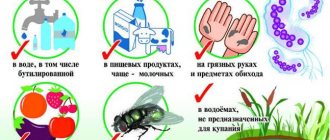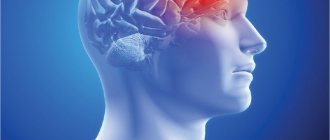February 14, 2019
Get a free online consultation
The term “substance abuse” refers to a person’s dependence on taking toxic substances. In this article we will talk more fully about this painful attraction and determine what exactly the negative impact of substance abuse on the body is.
Content:
- What causes substance abuse
- Who is most likely to become a substance abuser?
- Formation of substance abuse
- Symptoms of substance abuse
- Features of the effects of certain types of surfactants in substance abuse
- Consequences of substance abuse
- Treatment of substance abuse
Substance abuse is a variant of dependence on psychoactive substances (PAS) that are not included in the list of drugs. At its core, this is one of the types of drug addiction. Both drug addicts and substance abusers suffer from mental and physical addiction, deteriorate over time, and suffer complications in the form of mental problems, chronic diseases of internal organs and the nervous system. The medical department provides diagnosis and treatment of people suffering from substance abuse, subsequent rehabilitation and prevention of breakdowns.
Rehabilitation
Working with a psychotherapist is usually long-term. It takes a year or even more. All this time, the patient can live in a rehabilitation center for addicts and participate in special rehabilitation programs. Or maybe you can come to sessions and consultations from your home. The first option for consolidating the results of treatment for substance abuse is more preferable, since, being in an isolated environment, the patient communicates only with “comrades in misfortune” and doctors, receives the support he needs, learns to manage his own behavior, and sets new important life goals. The clinic eliminates the negative influence of former drug-addicted friends on him and creates all the conditions for a quick recovery.
What causes substance abuse
When treating addictions in adolescents, narcologists have to deal with patients who inhale toxic fumes from household and industrial chemicals. To obtain a hallucinogenic and intoxicating effect, drug addicts most often use products containing:
- xylene;
- toluene;
- benzene;
- perchlorethylene;
- trichlorethylene;
- trichloroethane.
These substances are highly toxic, change human consciousness, damage the intellect, and, as a rule, are part of:
- glue;
- ether;
- paint and varnish products;
- gasoline;
- domestic gas;
- solvents, stain removers;
- washing powders, fabric softeners.
All funds are available and inexpensive.
WHO IS MOST OFTEN TO BECOME A TOXIC ADICATOR
The main consumers of toxic compounds with narcotic effects are children and adolescents aged 12-14 years. Adults rarely suffer from this type of addiction.
The risk group includes:
- Children growing up without parents, from dysfunctional families.
- Teenagers who fell under the influence of subcultural groups.
- Boys and girls who are inclined to imitate certain authorities.
- Young people with mental underdevelopment and other psychopathology.
Formation of substance abuse
The main route of ingestion of toxic substances is inhalation of vapors. Vivid hallucinatory visions do not always occur when first used. Most often, the symptoms of poisoning come to the fore:
- nausea;
- weakness;
- vomit;
- headache;
- bad feeling.
But in cases where a drug addict persistently continues to use a psychoactive substance, the signs of poisoning gradually disappear, and euphoric experiences take on leading importance. The attraction becomes stronger every time. To form a mental form of addiction, it is enough to experience the “high” only 5-6 times. Over time, the body gets used to the constant presence of psychochemicals. Toxic symptoms subside, incoordination of movements disappears. Euphorization becomes more pronounced and occurs earlier. The dose required to achieve intoxication increases 2-3 times (the addiction stage is underway).
Outwardly, the substance abuser begins to show personality degradation. Observed:
- narrowing the range of interests;
- desire to be alone;
- directing all desires to search for the next portion of a chemical psychotropic drug.
Effects obtained from inhaling toxins
What exactly the addict experiences, what feelings he has, depends on what drug he inhales and how many breaths he takes. After taking 1-3 breaths, a person initially does not experience significant changes in his well-being. He may begin to feel dizzy, and mild nausea may occur. Poisons are just beginning to affect the brain.
After 4-6 inhalations, the effects of narcotic substances become more noticeable. The world around him seems brighter and more attractive to the addict, negative thoughts disappear, and euphoria arises. At the same time, consciousness is not yet out of control. A person understands where and why he is, what he is doing.
After 7-8 inhalations, the patient practically loses control over his body and loses touch with reality. If he closes his eyes, he will hallucinate. What is happening around is perceived as if through a prism. A characteristic sign of addiction at this stage of inhaling a toxic substance is inappropriate behavior. The patient may laugh, although there is no reason for this, cry uncontrollably, scream, and rush into battle. From the outside it won’t be difficult to understand that something strange is happening to him.
Symptoms of substance abuse
Addiction forms very quickly. Clinical manifestations of toxic effects depend on the stage of anesthesia:
- At the first stage, against the background of inhalation of vapors, euphoric sensations arise, similar to alcohol intoxication and characteristic of the first stage of the process. The drug addict's mood rises, a feeling of comfort arises, a slight stupor appears, warmth in the body, slight dizziness with noise. If you stop inhaling vapors during this phase, the condition will quickly return to normal.
- As inspiration continues, lightness appears in the body, carelessness and carelessness. Unreasonable joy gives you the opportunity to have fun and laugh just like that.
- The third stage is characterized by the appearance of “cartoons”. Hallucinatory visions are filled with a variety of sounds and colors. Even after stopping inhalation of psychoactive compounds, symptoms continue for about 2 hours. Euphorization gradually turns into depression, weakness, lethargy, and physical fatigue.
Features of the effects of certain types of surfactants in substance abuse
Based on external changes, one can draw conclusions about what substance the patient is under the influence of.
Each chemical compound has its own characteristic manifestations:
- Gasoline is characterized by intoxication 8-12 minutes after inhalation. The entry of fumes into the lungs is accompanied by coughing and sore throat. After their disappearance, an accelerated heartbeat, redness of the facial skin, dilated pupils, incoordination and unsteadiness of gait appear. The next stage is delirium and hallucinatory visions against a background of euphoria.
- Inhaling acetone is characterized by an instant euphoric reaction, disorientation and hallucinatory colorful symptoms, often with erotic content.
- When inhaling glue, euphoria and hallucinations occur when the bag is placed on the head. It is this factor that causes sad consequences - suffocation.
- When exposed to solvents, mood swings are observed - joy is often replaced by attacks of malice and anger.
After the cessation of the intake of psychoactive substances into the body, weakness, nausea and loss of strength develop.
Consequences of substance abuse
Without timely treatment of substance abuse, regular use of psychoactive substances leads to loss of vital interests and failure to fulfill responsibilities.
Children and adolescents develop mental and somatic disorders:
- reduced body weight;
- brittle nails and hair loss;
- sallow color and puffiness of the face;
- reduced intelligence.
Withdrawal syndrome develops after 3-6 months of regular use of psychotropic substances.
Withdrawal is accompanied by:
- aggressiveness and malice;
- sleep disorders;
- decreased appetite;
- constant dilation of the pupils;
- tremor of the arms and legs, local convulsions;
- depression and anxiety.
The withdrawal syndrome lasts about 2 weeks. Mental dependence can take much longer to make itself felt.
Possible complications
Like any drug addiction, substance abuse causes serious harm to the physical and mental health of the addict. With prolonged use, a person experiences various respiratory allergies and diseases, cough due to constant damage to the respiratory tract, swelling, drowsiness and chronic fatigue. Also, prolonged use leads to rapid aging of the body, even if we are talking about a child or teenager.
For the psyche, the harm is even more pronounced. Substance abuse is characterized by depression and constant moral fatigue, apathy, which can suddenly give way to attacks of aggression. A person’s personality gradually changes and degrades. Without treatment, this addiction leads to complete disintegration of personality, loss of goals and desires, loss from society and the appearance of various mental disorders that are not always reversible.
Treatment of substance abuse
Getting rid of the disease begins with a visit to a narcologist. After the examination, the patient is sent to a narcological hospital.
Treatment of addiction to toxic substances takes place in several stages:
- Cleansing the body and relieving withdrawal symptoms. Medical detoxification includes infusion-drip therapy. Droppers are placed for several days until complete removal of toxins is achieved.
- Medicinal cleansing is complemented by procedures of laser blood irradiation, plasmapheresis, hemodialysis, hemosorption, and xenon therapy.
- Maintenance pharmacotherapy. The patient receives injections of vitamins, nootropics, hepatoprotectors, and metabolic agents.
- Psychotropic therapy. To relieve symptoms of mental disorders, the following are added to the course of treatment: antidepressants, tranquilizers, antipsychotics.
- Additional methods are acupuncture, electrical stimulation.
- Psychotherapy. When treating substance abuse, individual and group psychocorrection, hypnosis, and cognitive-behavioral techniques are prescribed. Relatives (most often parents of adolescent substance abusers) are involved in psychotherapeutic sessions.
- Coding. The most effective results in the treatment of addiction are provided by stress therapy methods according to Dovzhenko.
The final stage is rehabilitation, aimed at consolidating the results of therapy and preventing possible breakdowns. Narco has its own programs for the resocialization of people suffering from substance abuse. The prognosis for recovery from substance abuse depends on timely consultation with a specialist. The earlier therapy begins, the better its results will be.
The text was checked by expert doctors: Head of the socio-psychological service of the Alkoklinik MC, psychologist Yu.P. Baranova, L.A. Serova, a psychiatrist-narcologist.
CAN'T FIND THE ANSWER?
Consult a specialist
Or call: +7 (495) 798-30-80
Call! We work around the clock!
Literature:
- Fundamentals of social medicine [Text]: educational and methodological manual for organizing independent work of students / Z. N. Khismatullina; Kazan State Technological University - Kazan: KSTU, 2011. – 84 p.
- Addictology (Federal State Educational Standard of Higher Professional Education): an illustrated textbook for students of higher educational institutions of the humanities (all levels of training) / B. R. Mandel. — Moscow: DirectMEDIA, 2014. — 535 p.
- Psychiatry for everyone: popular. reference / O. F. Eryshev, A. M. Sprints. - St. Petersburg. ; M.: Neva, 2005. – 376 p.








